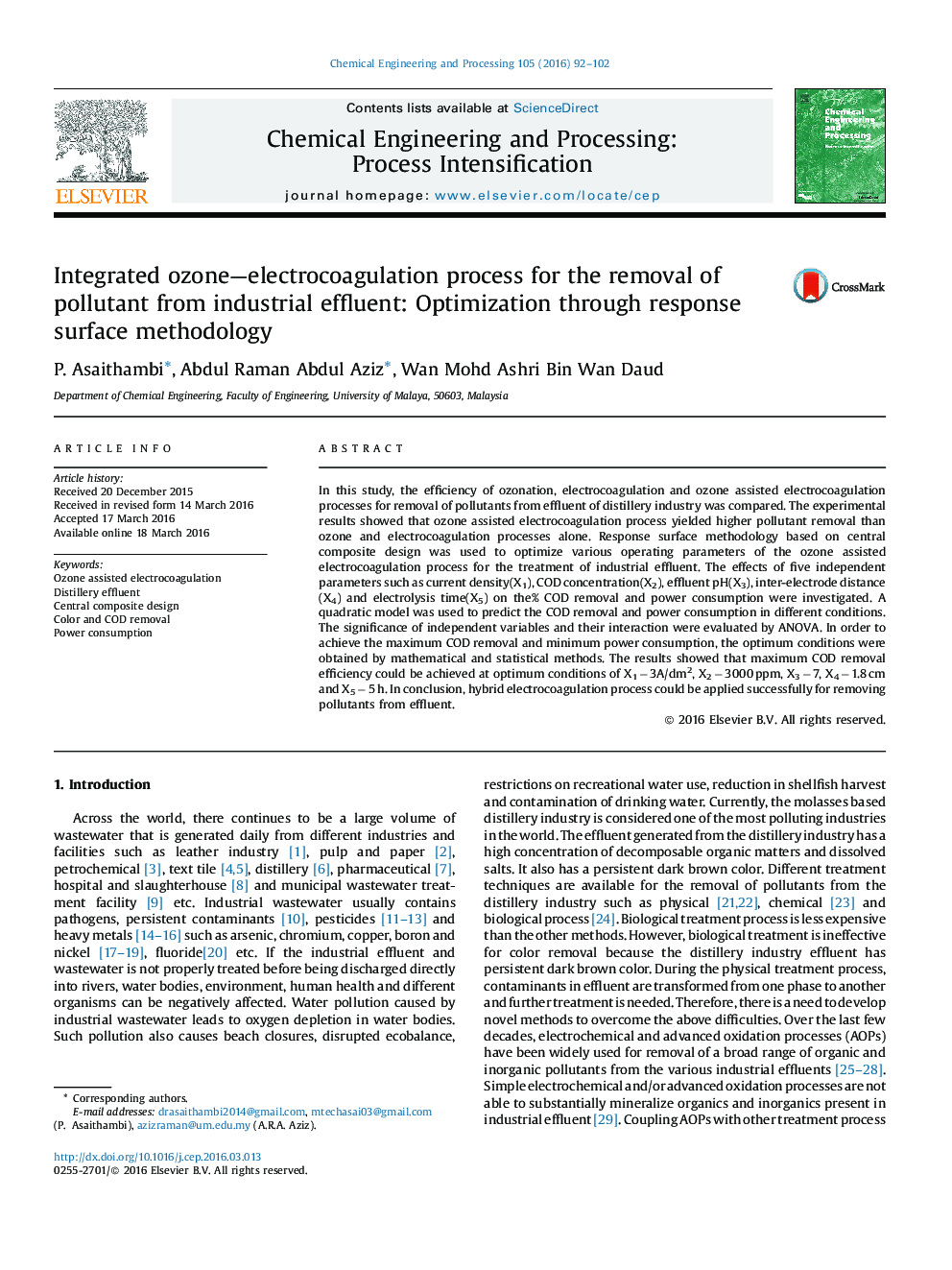| کد مقاله | کد نشریه | سال انتشار | مقاله انگلیسی | نسخه تمام متن |
|---|---|---|---|---|
| 686773 | 1460072 | 2016 | 11 صفحه PDF | دانلود رایگان |
• Ozonation, electrocoagulation and ozone assisted electrocoagulation process was compared for the removal of pollutant.
• Ozone assisted electrocoagulation was the most effective process for pollutant removal.
• RSM was used to investigate the effect of operating parameters to achieve maximum COD removal with minimum of power consumption.
• Hybrid electrocoagulation process can be applied effectively for removing pollutants.
In this study, the efficiency of ozonation, electrocoagulation and ozone assisted electrocoagulation processes for removal of pollutants from effluent of distillery industry was compared. The experimental results showed that ozone assisted electrocoagulation process yielded higher pollutant removal than ozone and electrocoagulation processes alone. Response surface methodology based on central composite design was used to optimize various operating parameters of the ozone assisted electrocoagulation process for the treatment of industrial effluent. The effects of five independent parameters such as current density(X1), COD concentration(X2), effluent pH(X3), inter-electrode distance(X4) and electrolysis time(X5) on the% COD removal and power consumption were investigated. A quadratic model was used to predict the COD removal and power consumption in different conditions. The significance of independent variables and their interaction were evaluated by ANOVA. In order to achieve the maximum COD removal and minimum power consumption, the optimum conditions were obtained by mathematical and statistical methods. The results showed that maximum COD removal efficiency could be achieved at optimum conditions of X1 − 3A/dm2, X2 − 3000 ppm, X3 − 7, X4 − 1.8 cm and X5 − 5 h. In conclusion, hybrid electrocoagulation process could be applied successfully for removing pollutants from effluent.
Figure optionsDownload as PowerPoint slide
Journal: Chemical Engineering and Processing: Process Intensification - Volume 105, July 2016, Pages 92–102
